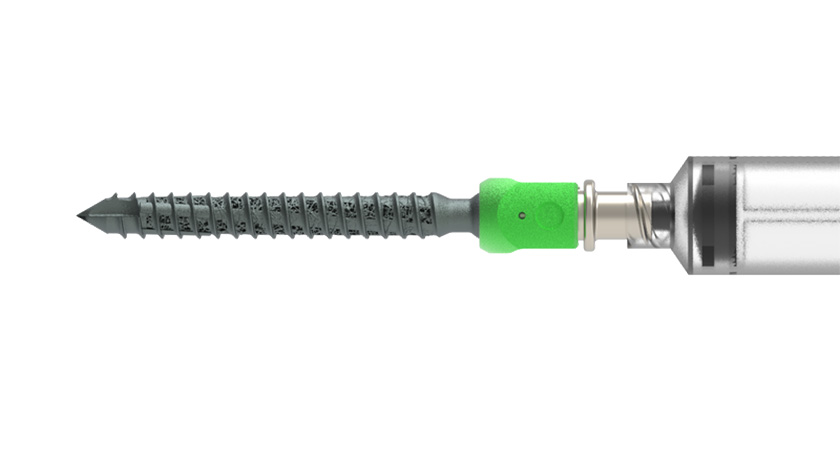
It’s time to look ahead to what’s in store for intriguing players in the orthopedic market, which we estimate grew 5% in 2024 to a worldwide total of nearly $62 billion in sales. We’ve tapped into the reporting of ORTHOWORLD Senior Market Analyst Mike Evers to identify five companies that are worth watching as the year progresses. It’ll be interesting to see whether they can continue their growth trajectories, capitalize on the future of high-tech surgical care and grab a significant share of the increasingly important outpatient surgery market.
Can OrthoPediatrics Maintain Its Momentum?
The mid-tier company, one of the fastest growing players in orthopedics, announced preliminary 2024 revenue of $205 million. OrthoPediatrics projects its 2025 sales to be between $235 million and $242 million, a 15% to 18% growth compared to last year.
To further differentiate its core business, OrthoPediatrics launched its enabling technologies division in late 2024, including a surgical workflow and outcome optimization platform that enhances preoperative planning and intraoperative efficiencies.
CEO and President David Bailey believes the company’s trauma and deformity business is poised to provide sustainable growth as other companies show less focus on pediatric trauma and limb deformity.
“Throughout 2024 we delivered strong results, advanced our strategic initiatives and grew our market share within pediatric orthopedics,” Bailey said. “Our trauma and deformity and scoliosis businesses continue to execute and contribute to our overall growth as we drive topline revenue and significantly increased profitability.”
Will Medacta Capitalize on the ASC Market?
Medacta continues to perform above market growth, and reached an estimated $619 million in revenue in 2024.
At the end of last year, Medacta launched a shoulder application for its NextAR augmented reality platform, adding to the system’s joint replacement and spine applications that have contributed to the company’s positive performance. The move was part of Medacta’s overall strategy to grow its fledgling and successful extremity portfolio.
Medacta is advancing and promoting kinematic alignment of knee replacement implants and minimally invasive hip replacement surgery, and is focused on sports medicine solutions as drivers of short-term growth as more cases move to outpatient settings.
“We want to be a significant player in the ASC space, especially in the U.S. market,” said CEO Francesco Siccardi. “To meet that demand, we will expand our sales and manufacturing forces. Growing the number of employees while maintaining our culture is an important element of the next five years.”
Will Enabling Tech Fuel Medtronic’s Success?
Expansion of the AiBLE ecosystem is fueling the company’s recent growth in the $10.4 billion spine segment, in which the company accounts for 21% or $3.3 billion of global sales.
“The evidence of the approach is in the company’s results over the last three years,” said Skip Kiil, Medtronic’s President of Cranial and Spinal Technology.
Medtronic entered a global partnership with Siemens Healthineers last year to integrate the company’s imaging technology into the AiBLE ecosystem to reduce variability and improve outcomes for spine patients. Kiil believes investing in digital surgery provides access to the data that improves patient care and informs the company’s implant designs.
“We need to bring data and technology into the workplace and in partnership and collaboration with surgeons who are delivering quality care,” Kiil said. “We feel we’re much better positioned than anyone else in the industry.”
Can Orthofix Continue to Chart a New Path Forward?
After an eventful 2023 marked by a merger with SeaSpine and upheaval at the C-suite level, Orthofix righted the ship last year and in the third quarter achieved a record level of trauma sales and placements of its 7D navigation system and an 18% growth in its spinal fixation portfolio. The company is expected to finish 2024 with orthopedic sales of about $800 million, nearly 7% more than the previous year.
“We are at a very good moment in the history of the company,” said President and CEO Massimo Calafiore. “Unlike competitors in the market, we believe we can balance growth with value creation. Our comprehensive portfolio and steady cadence of innovation will enable us to attract top sales talent and drive stickier relationships with surgeons and hospital accounts, which we expect to result in incremental product pull-through as well as ASP lift from mix benefits.”
Orthofix’s new culture is focused on increasing the rate of product innovation and attracting skilled sales professionals who can expand the company’s U.S. presence. The company wants to increase profits by maximizing the revenues of current customer accounts and leveraging the 7D system to stake a bigger claim in the deformity market, which includes complex spine procedures.
“The 7D system has been created from the beginning to be used in open surgery, which represents 80% of the core market. We’re also making a lot of progress on developing our MIS solution, which is giving us the opportunity to create a footprint in the ASC,” Calafiore said. “So, from the market penetration perspective, demand keeps increasing because the ways the 7D system can be used keep increasing.”
Will Zimmer Biomet’s Expanded Portfolio Pay Off?
Zimmer Biomet is expected to report 2024 sales near $7.7 billion, growth of about 4% over 2023. The company is counting on new product launches within its digital ecosystem to differentiate itself from the top players of the orthopedic industry. It’s also focused on expanding its product offerings and customer base moving forward.
Last year, Zimmer Biomet acquired OrthoGrid and entered into a limited distribution agreement with THINK Surgical to integrate its digital technology into a customized TMINI handheld robotic system, which features a small footprint that appeals to space-conscious ASCs and CT scanning capabilities.
The limited commercial launch of ROSA Shoulder System — the first robotic-assisted platform designed for shoulder replacement surgery — has produced positive feedback from surgeons for simplifying the complexity of anatomic or reverse surgical approaches.
“TMINI is not going to replace ROSA, just like OrthoGrid is not going to replace ROSA. It’s all about having breadth of portfolio,” said Zimmer Biomet CEO Ivan Tornos. “We are deeply committed to ROSA, which continues to be one of our fastest-growing platforms. We’re very pleased with where we are with ROSA, but we know we need to have optionality, and we like our chances when it comes to that.”
The orthopedic market is expected to remain stable throughout 2025 and continue to grow in the single digits as favorable patient demographics drive surgical demand, and enabling technology plays an increasingly important role in improved outcomes. We’re looking forward to tracking the developments of these five companies and reporting on their progress over the coming months.
DC
Dan Cook is a Senior Editor at ORTHOWORLD. He develops content focused on important industry trends, top thought leaders and innovative technologies.




